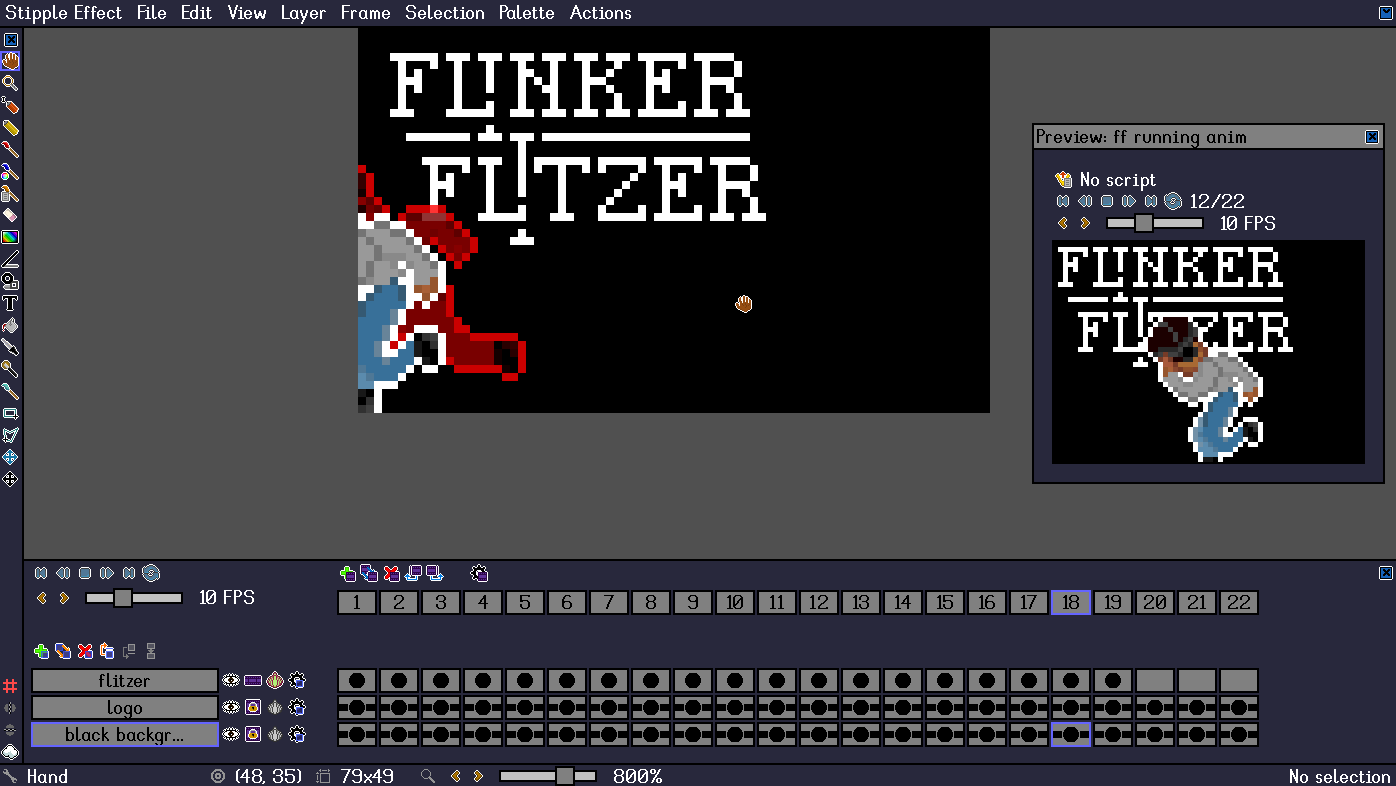Stipple Effect
Pixel art editor that supports animation and scripting

Stipple Effect is a pixel art editor that has the potential to revolutionize 2D indie game development with its approach to scripting. It has all the standard features of a raster graphics editor, along with a host of features specifically intended to facilitate the creation of pixel art for video games or online distribution.
Such features include:
- Split/stitch: Stitch an animation into a sprite sheet or split a static project into an animation with as little as a single click or keystroke
- Pixel grid: Easily customize the size of pixel grid cells. The box select tool selection area can be snapped to the grid.
- Onion skinning
- Easy and intuitive outlining system
- Palettes
- Import and export palettes
- Populate a palette with colors from the project canvas
- Palettization: Map project canvas colors to their nearest equivalent palette color
- Export file types
- PNG sprite sheet
- Separate PNGs per frame
- Animated GIFs
- MP4 video
- And much more...
Scripting
Stipple Effect really shines when users harness the power of the scripting system.
In Stipple Effect, there are three main applications for scripting:
Development
- Designed and implemented a desktop GUI application
- Designed and implemented a scripting language
- Released and marketed Stipple Effect with no budget; currently has thousands of downloads and over 500 stars on GitHub
- Wrote comprehensive documentation for the core program and its scripting API
Technologies
Java
The source code for Stipple Effect is written in Java 17.
Delta Time
Stipple Effect is built on top of my Delta Time library. Delta Time handles actions such as the program execution loop, text rendering, and UI element logic.
DeltaScript
Stipple Effect uses its own domain-specific language for scripting. This language is an extension dialect of DeltaScript.